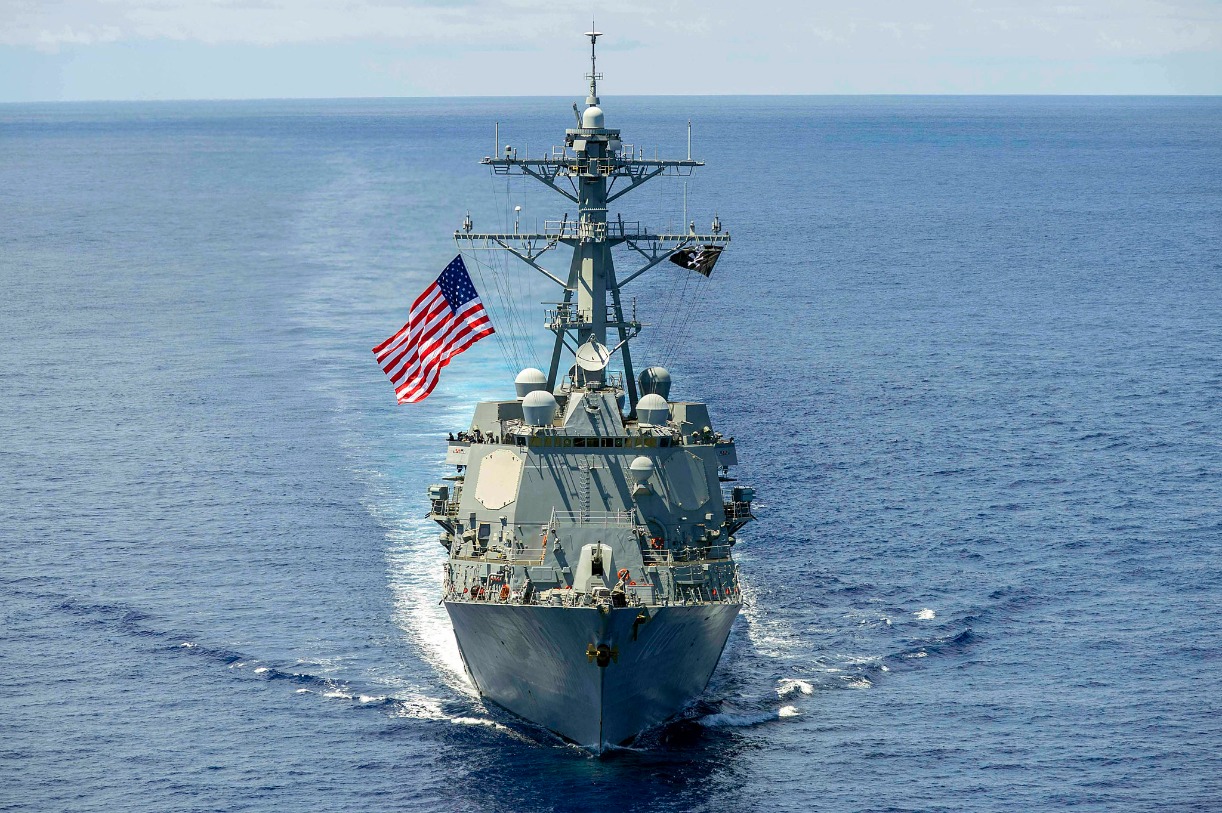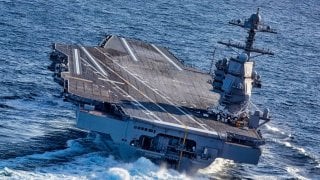U.S. Navy Is Freaking Out: China Is Showing Off a New Carrier-Killer Torpedo
China's People's Liberation Army Navy (PLAN) is reportedly developing a "jam-resistant" Yu-10 torpedo, designed to effectively strike moving targets with high accuracy. This torpedo, launched from a Type-039B submarine, was demonstrated in a test that reportedly sunk a retired landing vessel.
Summary and Key Points: China's People's Liberation Army Navy (PLAN) is reportedly developing a "jam-resistant" Yu-10 torpedo, designed to effectively strike moving targets with high accuracy. This torpedo, launched from a Type-039B submarine, was demonstrated in a test that reportedly sunk a retired landing vessel.

-The Yu-10's capabilities are seen as a significant threat to large naval targets, including aircraft carriers.
-The ongoing development of such advanced torpedoes highlights China's efforts to enhance its submarine warfare capabilities, posing a growing challenge to U.S. naval forces.
China Developed Jam-Resistant Torpedo
The People's Liberation Army (PLA) has repeatedly touted the capabilities of its DF-21D and DF-26B "carrier killer" missiles that can be fired by land-based mobile launchers. Beijing's deployment of such weapons could deny access to a potential adversary in the East and South China Seas, but now it seems that the People's Liberation Army Navy (PLAN) could have in its arsenal a weapon that could be employed anywhere its submarines can travel.
China state media broadcaster China Central Television (CCTV) highlighted the capabilities of what was believed to be the PLAN's Yu-10 torpedo. In a video presented on the media outlet last month to mark the 70th anniversary of the founding of the PLAN's submarine, a Type-039B diesel-electric submarine (NATO reporting name Yuan class) fired the torpedo at a Type 074 amphibious landing vessel.
"Its stern was lifted out of the water by the explosion shock wave, accompanied by a column of water nearly 100 meters (328 feet) high," reported The South China Morning Post, adding that the Yu-10 is believed to have entered service around 2015, quoting an article in the Ordnance Industry Science Technology, a Chinese military magazine.
"From the CCTV video, the power of this torpedo means even an aircraft carrier could hardly escape the fate of sinking, let alone destroyers or landing docks. Even if not sunk, they would be essentially out of operation," the Chinese military publication had stated. "This technology uses the wake generated by the target vessel to correct the torpedo’s orientation to better track and effectively strike moving targets, which greatly improves the responsiveness and accuracy of the torpedo, making it more resistant to jamming."
Though the report from The China Morning Post claimed the Yu-10 has an estimated range of fifty km (thirty miles), which is comparable to the U.S. Navy's MK-48 Mod 7, the exact specifications of the Yu-10 torpedo have not been published, nor has its use in sinking the amphibious landing vessel been independently verified.
Chinese SINKEX – Response to U.S. RIMPAC?
The apparent sinking of a retired Type 074 amphibious landing vessel was likely conducted in response to a pair of Sinking Excercise (SINKEX) drills carried out during the Rim of the Pacific (RIMPAC) 2024 multinational exercises, and follows a similar event in June in which the amphibious transport dock ex-USS Cleveland (LPD-7) was sunk during the Valiant Shield (VS) 2024.
The Austin-class amphibious transport dock – the third ship of the U.S. Navy to be named for the Ohio city – had been maintained at the Naval Inactive Ship Maintenance Facility at Pearl Harbor, Hawaii, since November 2017. The retired vessel was sunk as a target on June 17, during a naval-fire exercise.
During RIMPAC 2024, a U.S. Air Force B-2 Spirit bomber successfully sank the ex-USS Dubuque (LPD-8) – another Austin-class amphibious transport dock – with a GPS-guided bomb. Even more impressively, the decommissioned U.S. Navy amphibious assault ship USS Tarawa (LHA-1) was sunk after being hit by a Long-Range Anti-Ship Missile (LRASM) from a U.S. Navy F/A-18F Super Hornet.
That Sinking Feeling
These recent U.S. and Chinese exercises highlight that sinking a warship may be the easy part, at least with the right ordnance. The trick would be getting through the vast screen of guided-missile destroyers and other defenses.
The danger for the U.S. Navy is that submarines like the PLAN's Type 039B are noted for employing an air-independent power (AIP) system that can allow them to remain submerged for long periods, operating quietly and stealthily.

As previously reported, several U.S. carriers have been notionally "sunk" in exercises by similar submarines, raising concerns about the safety of the floating air bases against such threats. Coupled with a "jam-resistant" submarine could make for a dangerous threat indeed.
Author Experience and Expertise: Peter Suciu
Peter Suciu is a Michigan-based writer. He has contributed to more than four dozen magazines, newspapers, and websites with over 3,200 published pieces over a twenty-year career in journalism. He regularly writes about military hardware, firearms history, cybersecurity, politics, and international affairs. Peter is also a Contributing Writer for Forbes and Clearance Jobs. You can follow him on Twitter: @PeterSuciu.
You can email the author: [email protected].
Image Credit: Creative Commons and/or Shutterstock.


